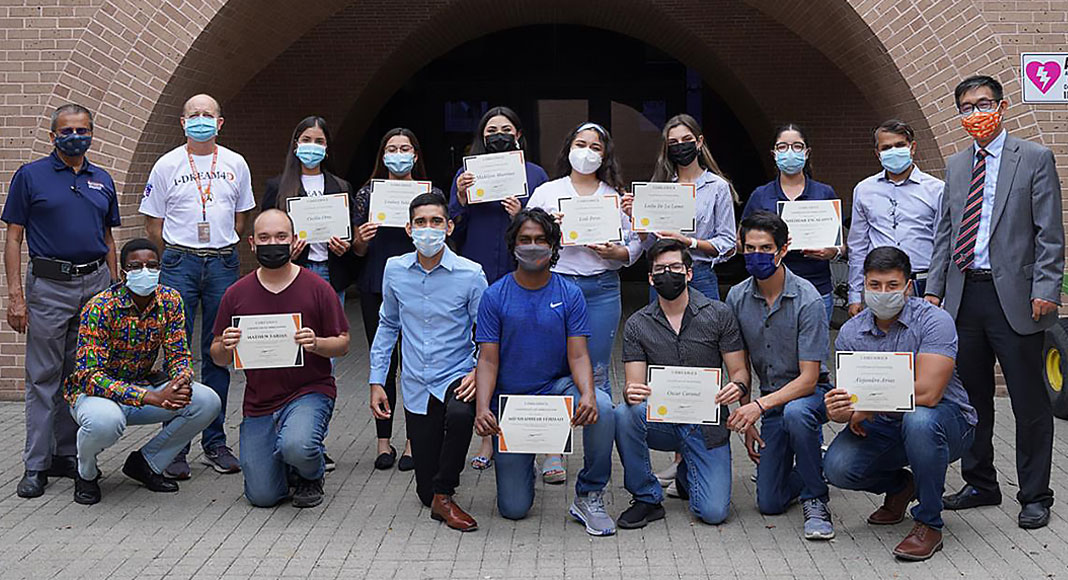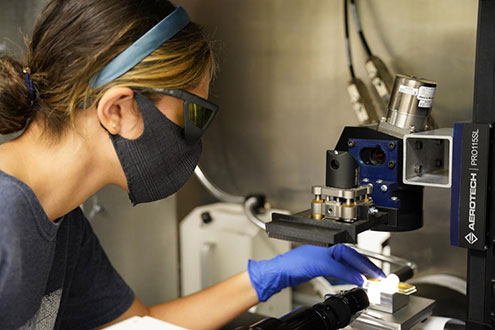
Texas Border Business
By Victoria Brito Morales
RIO GRANDE VALLEY, Texas – Area high school students this summer had a chance to participate in hands-on learning at UTRGV’s newly expanded I-DREAM4D virtual summer camp.
Last year, the camp – a Department of Defense consortium known formally as Innovation Driving Research / Education for Advanced Manufacturing for the Defense – was inaugurated at various institutions by providing a summer camp for high school rising seniors. Campers built and powered robotics kits with the guidance of camp instructors.
This year, Region One – part of a statewide system of regional education service centers designed to help school districts improve student performance, enable districts to operate more economically and efficiently, and implement special initiatives – provided additional funding to expand the camps to include rising sophomores from across the Valley.
The camp was divided into two sections that differed only in complexity to align with the grade level.
Dr. Jianzhi Li, professor in the UTRGV Department of Manufacturing and Industrial Engineering in the College of Engineering and Computer Science, is principal investigator on the grant. The robotics kits were hand-delivered to students in the Valley and mailed to those out of the region, he said.
“Our idea is to teach the students engineering and design, and also to have some fun,” Li said.
About 60 Region One students participated in the newly expanded camp, held July 19-30, building an mBOT robot under the direction of Edna Orozco, UTRGV lecturer of Manufacturing and Industrial Engineering.
Two additional camps, based on the format of last year’s camp, were held July 19-30 and Aug. 2-13 with rising seniors who worked on a Parallax robot. Those camps were led by Dr. Alley Butler, UTRGV professor of Manufacturing and Industrial Engineering.
“Dr. Butler and Edna Orozco have put in a significant amount of effort to make the camps happen, and it is not easy,” Li said. “But we get in there and work hard to make this camp a good experience for the students.”

HIGH SCHOOL CAMPERS IN ACTION
Joining the opening camp for underclassmen was Vanessa Villegas, a rising sophomore from Mission High School who hopes one day to pursue a career in the medical field. This camp helped her critical thinking, she said, and technology will help her in her future pursuits.
“This camp really made me think about how much technology I’m going to be using as somebody who works in the medical field,” Villegas said. “I think that is something really useful. I’m already preparing myself for my future and my workplace.”
Joseph Bautista, a junior at CTE Early College in Weslaco, joined the camp to have the opportunity to work with the Parallax Arduino.
Bautista said his perception of STEM was enhanced after attending the UTRGV camp. He hopes one day to become an aerospace engineer at NASA, and eventually to become an astronaut.
“This opportunity to attend this camp has made me more curious during my time in the camp,” Bautista said. “I have been in robotics clubs since the fourth grade and attended two summers of another UTRGV program called UTRGV Railway Safety.”
MORE TO EXPLORE
Also added to the consortium are new summer internships, with 38 UTRGV engineering students participating. Students had the opportunity to intern and use the skills attained in the College of Engineering and Computer Science.
The internship pairs an undergraduate with a graduate student to advise in seven various projects related to defense manufacturing. Due to COVID restrictions, the internships were done on the UTRGV campus with virtual training provided by hosting industry members. Many of the interns were interning with Honeywell. The organization supervised the interns’ projects and invited speakers to present on different topics.
Enrique Contreras Lopez, a UTRGV engineering graduate student from Reynosa, Mexico, was the graduate overseeing a project conducted by Oscar Coronel, a senior manufacturing engineering major from Mission.
“The internship program is a project that lets the students get familiar with doing research developing a research question, all the way to designing and carrying out an experiment,” Contreras Lopez said.
Coronel’s area of research was laser grinding, and Lopez advised and guided him on machinery instructions and safety.
“I taught him how to fire the laser, programming to control the optics, the three-axis stages, and ultra-highspeed camera, and answered any questions he has. Then I would give feedback on his research questions,” Lopez said.
Coronel said he participated in the internship for the opportunity to get more hands-on training in the field.
“I got to work with the lasers for the first time,” he said. “It was a great experience that helped me because I learned how to do research and how to prepare research statements and work independently to plan our research tasks.”
The 10-week internship concluded with a student research symposium on the last day, with a presentation of final research outcomes.
ABOUT I-DREAM4D
I-DREAM4D was created by the U.S. Department of Defense to support the talent needs for U.S. military and defense manufacturing operations. The focus of the consortium is collaborative, to conduct impactful research for defense innovations and to prepare engineers and scientists who lead the U.S. defense manufacturing innovations.
The consortium is composed of five higher education institutions (UTRGV, UT Austin, UTSA, Virginia Tech and Virginia State University), national research centers, national labs, defense manufacturers, local high school districts and community colleges. The goal is to promote advanced additive manufacturing (AM) and smart manufacturing (SM) and to support innovations for the defense industries.















